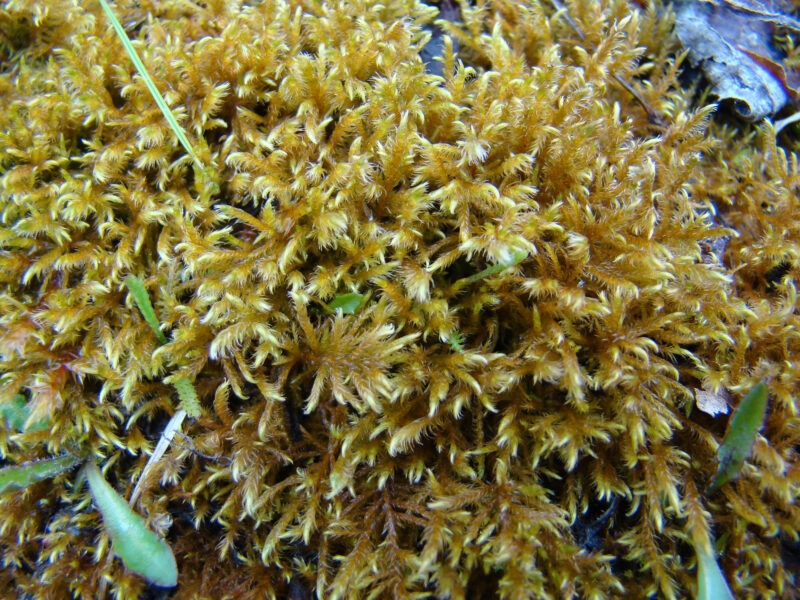Identification notes
Like other Palustriella species, this attractive species demands wet, strongly basic situations. Its classic habitat is in seepages and springs whose waters are hyper-saturated in calcium carbonate, especially in hard limestone districts. On exposure to air, this encrusts the plants of Palustriella commutata (and other surfaces), eventually accreting to form a soft, strongly basic rock called tufa. Fortunately, the regrettable practice of destroying tufa deposits to create rocks for the landscaping trade has mostly passed and tufaceous deposits are increasingly recognised as important geological/ecological features in their own right. The presence of P. commutata doesn’t always mean tufa is actively accreting, but the moss remains an excellent indicator of wet, highly basic habitats.
For the field bryologist, the most important field characters of P. commutata are its strongly pleated and hooked leaves and pinnate shoots, which may be green or brown-tinged. These place it in a small group of lookalikes and rule out others which do not have pleated leaves. Confusion is only really likely with the other two species of Palustriella, Sanionia species, which rarely grow in wet habitats and Hamatocaulis vernicosus, a smaller, reddish species with more weakly pleated leaves. Cratoneuron filicinum may replace P. commutata in intermittently wet lime-rich places but its leaves are not plicate and it is usually a smaller plant.
Read the Field Guide account

















